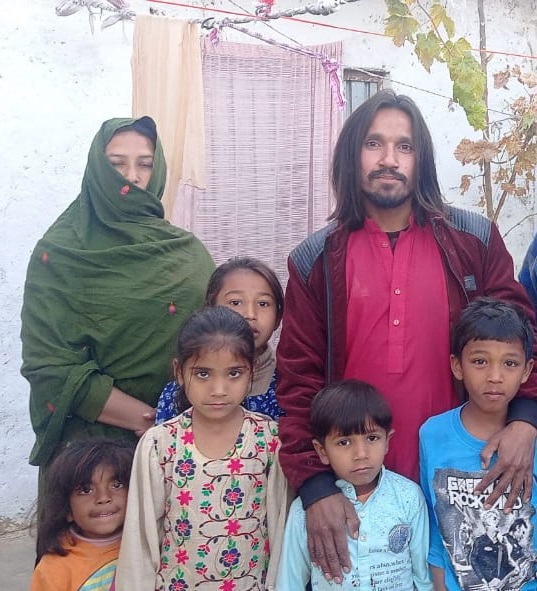Dehwari is an ethnic language group found in the Baluchistan area of Pakistan and Iran. Most Dehwari speakers are concentrated in Mastung, Khuzdar, Nushk, Kharan, Sarlath, Dalbandin, and Kalat. The Dehwari people are part of the Persian people cluster within the Persian-Median affinity bloc. This people group is only found in Pakistan. The Dehwari people are known for their hospitality. Guests are held in high esteem and considered a blessing from God. Many people even slaughter sheep or goats for their guests. Sometimes, in areas with more houses, the guest is assumed to be the guest of the whole village. Open-heartedness is a characteristic of tribal people and may not be observed among urban dwellers of the community.

The stars in the map indicate the presence of Dehwari people
Population Analysis
Census reports and people’s reports indicate that the population of Dehwari people in the country ranges from 16000 to 19000, while the estimated global population is approximately 20000. Based on the people’s report, the village-wise population is given below:
- Quetta – 4000
- Mastung – 3500
- Nushk – 3000
- Khuzdar – 3200
- Kharan – 1000
- Sarlath – 1000
- Dalbandin – 1000
- Kalat – 1000
The literacy rate of Dehwari is 40%. They are one of the ethnic groups with a very low rate of literacy in the country.
Vocation

The traditional occupation of Dehwari is agriculture. Earlier, they used primitive techniques to do farming. Now they are changing to some modern techniques to ease up their work. They mostly concentrated on food crops and fruits. They cultivate plums, peaches, pomegranates, apricots, apples, melons, cherries, pistachios, almonds, and saffron. Apart from farming, they are also involved in cattle rearing as well.
Socio-Cultural Features

As the intro suggests, the Dehwari people are well-known for their hospitality. The Dehwari people welcome their guests with open arms, offering them tea, snacks, and meals. Their culture values the tradition of hospitality, treating visitors as honored guests. Hosts often go out of their way to make guests feel comfortable and well taken care of, ensuring their needs are met. This extends beyond family and friends, as strangers are also welcomed with the same graciousness and kindness. The Dehwari people truly embody the spirit of hospitality and generosity.
The community follows an endogamous pattern in establishing marital relationships. Life partners are commonly selected within the family (constituting all close relatives) or tribe. Marriages are solemnized in the presence of a Mullah (a religious teacher) and witnesses. The birth of a male child is considered a source of pride since he is believed to be the defender of the family and community.
Language
Dehwari is the name of the language of the community. Genetically, it is a southwestern Persian language in the Indo-European language family. The people believe the Dehwari language came to exist in the 17th century. And, now, the language has been basilectalized from the Brahui language. The study determined that the Dehwari language is used in all the possible intra-community communications between people in a contact situation and is, therefore, vigorous enough to survive for upcoming generations. The people switch to Brahui and Urdu for their external communications and their children are sent to Madras to learn the basics of Arabic for their religious purposes. It is reported by the community members that only educated people can communicate in Urdu fluently. Unfortunately, the literacy of rate of the ethnic group is very low.
Even amid this complex multilingual background, people of the community maintain a strong positive attitude towards their mother tongue and promote their younger generation to learn and use their heart language in all the possible domains. Furthermore, it is noteworthy that the Dehwari people are delighted that individuals from other ethnic communities are taking an interest in learning and conversing in their language within their locality. Nonetheless, despite their satisfaction, it is important to acknowledge that their language has remained unwritten for centuries due to the lack of a writing system.